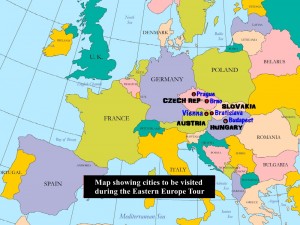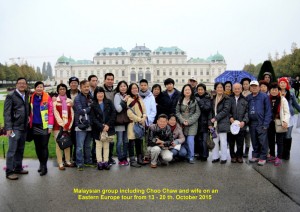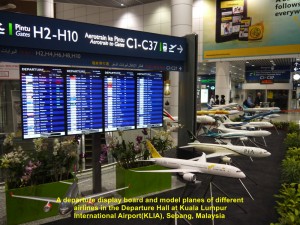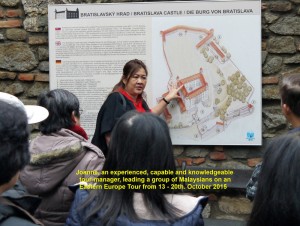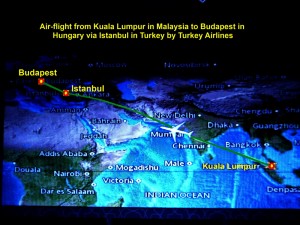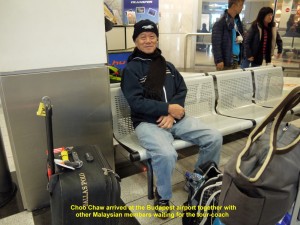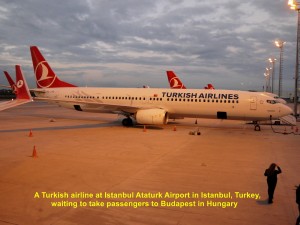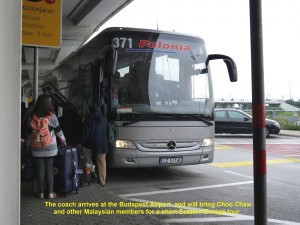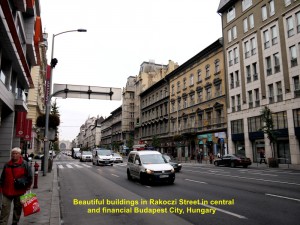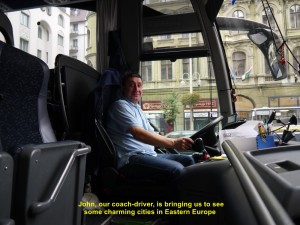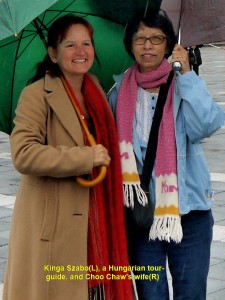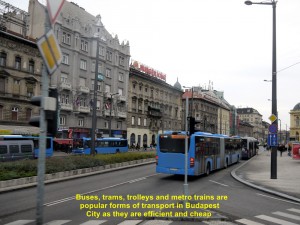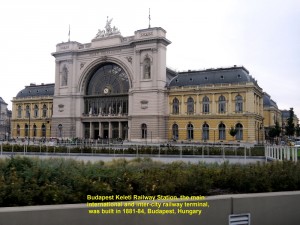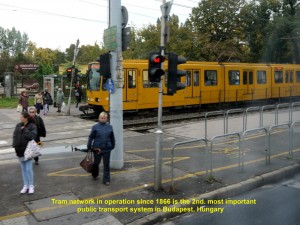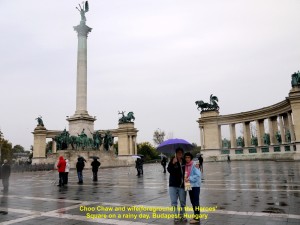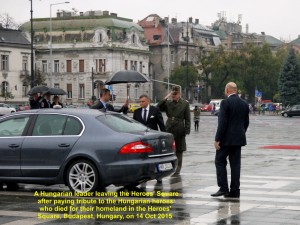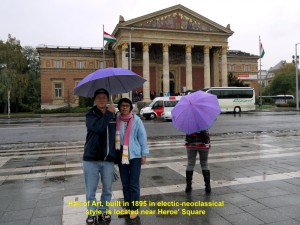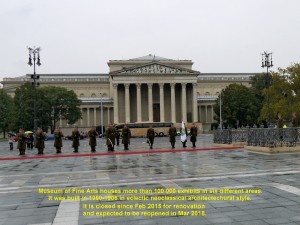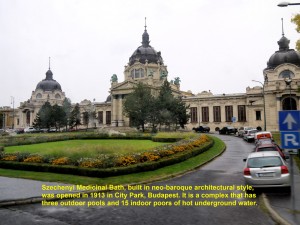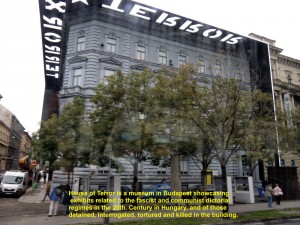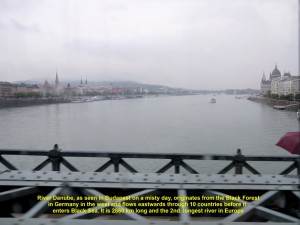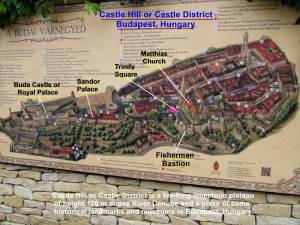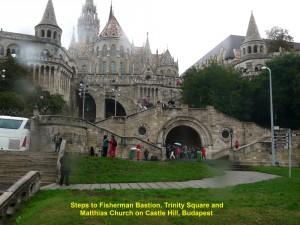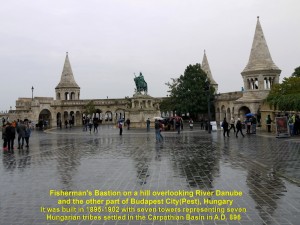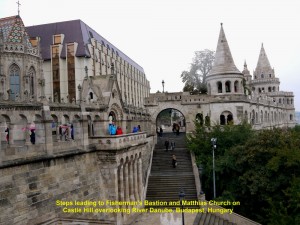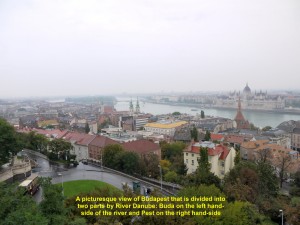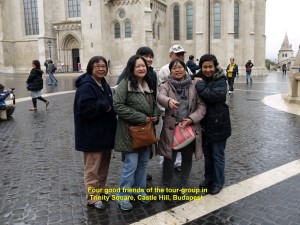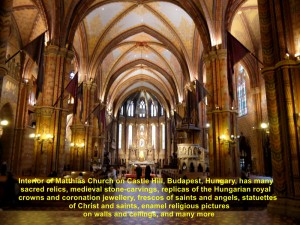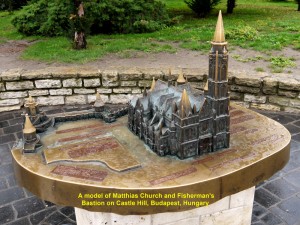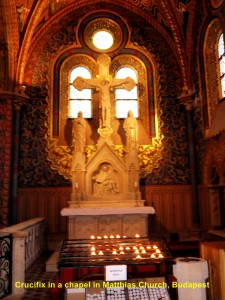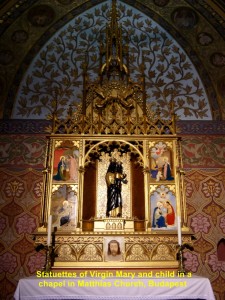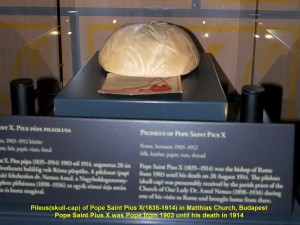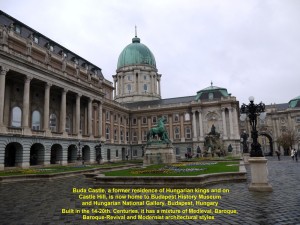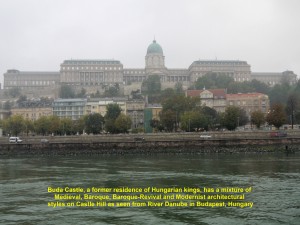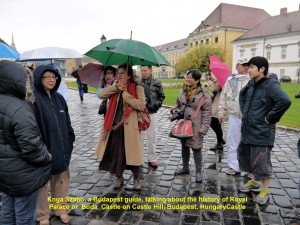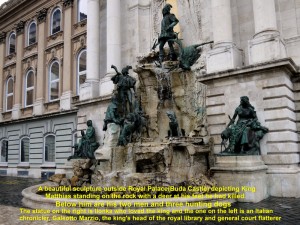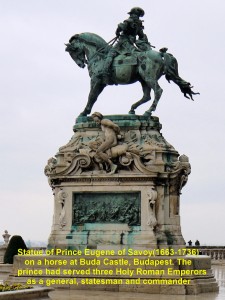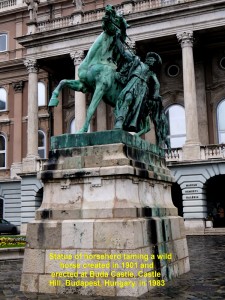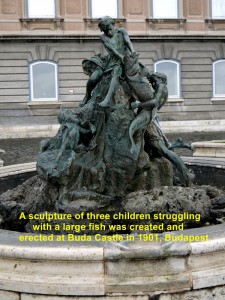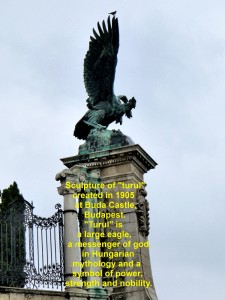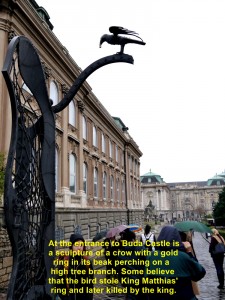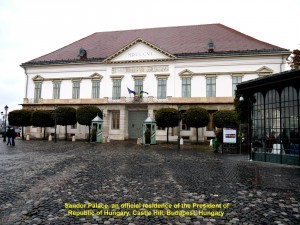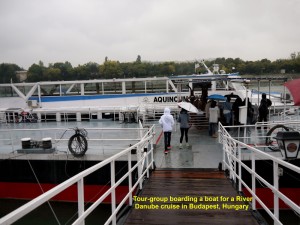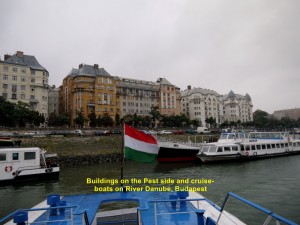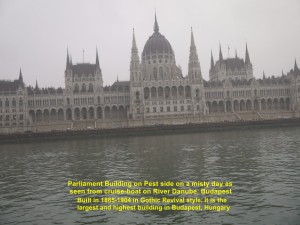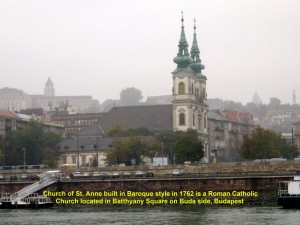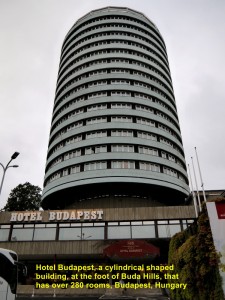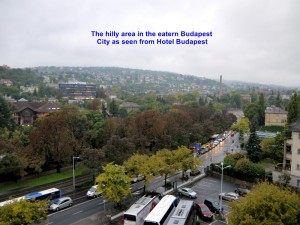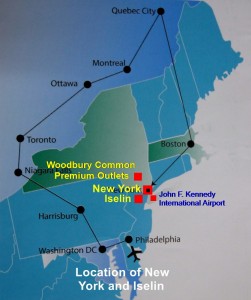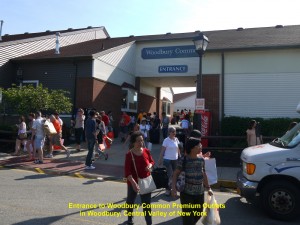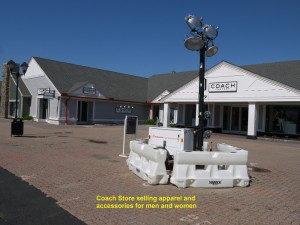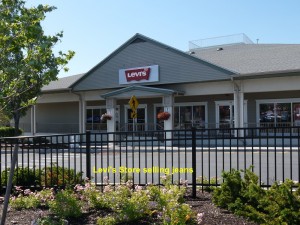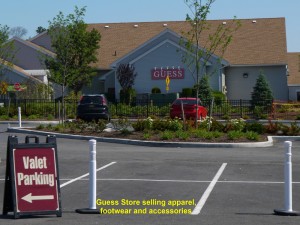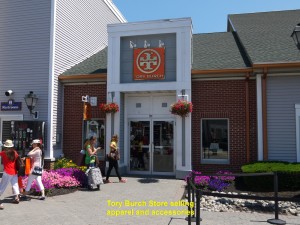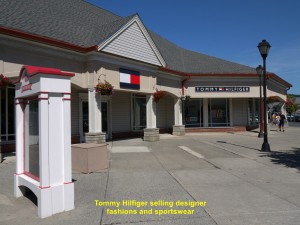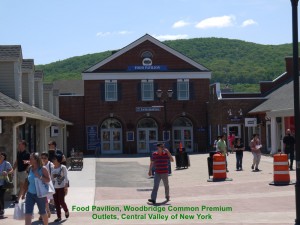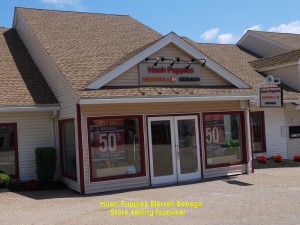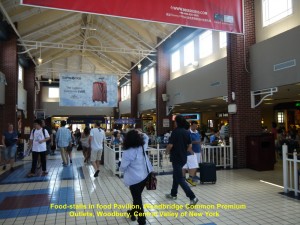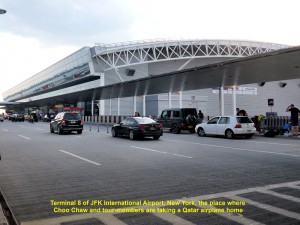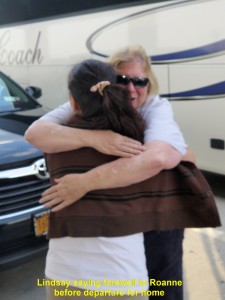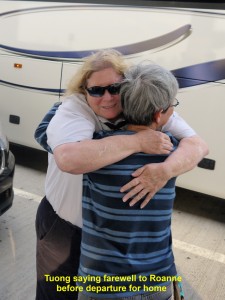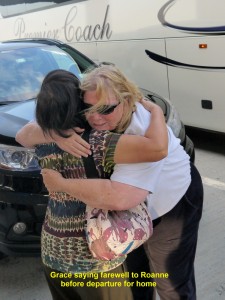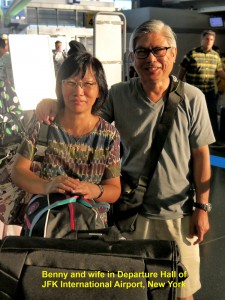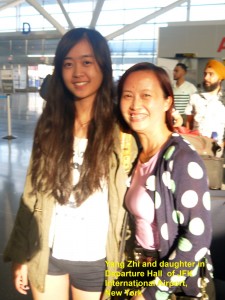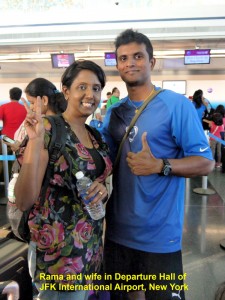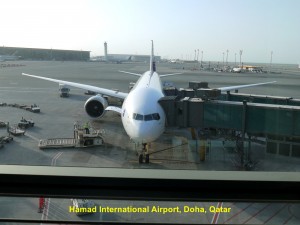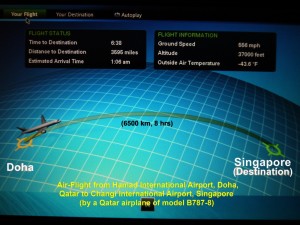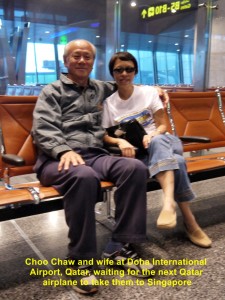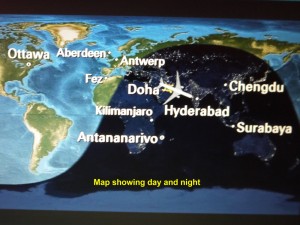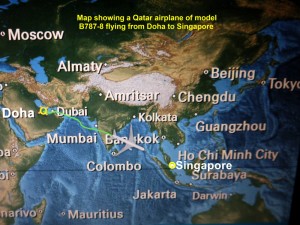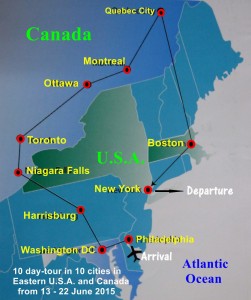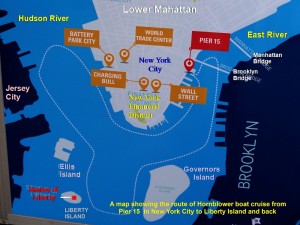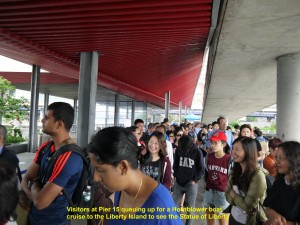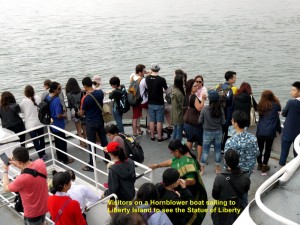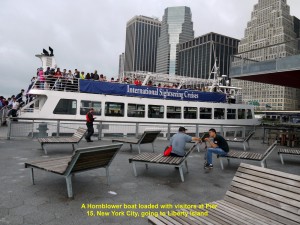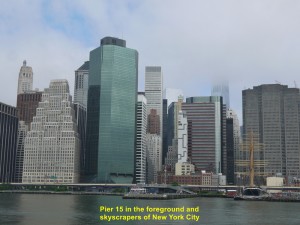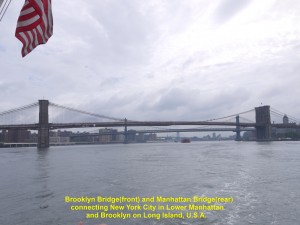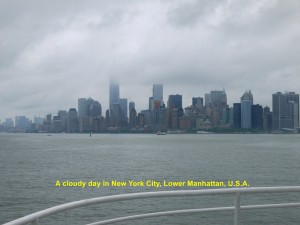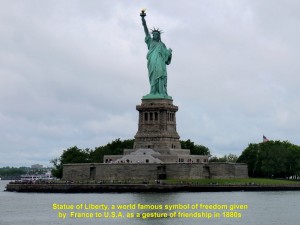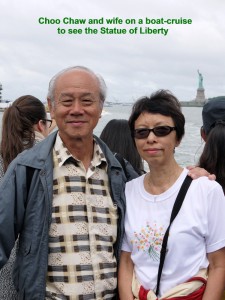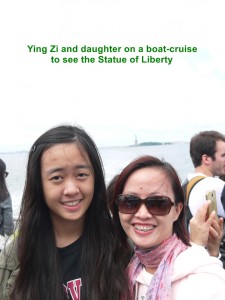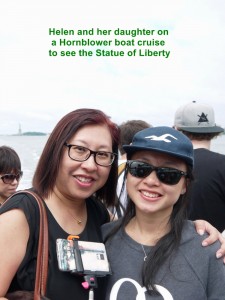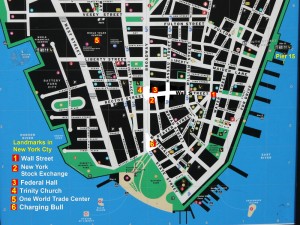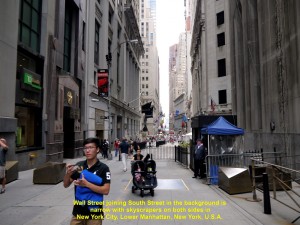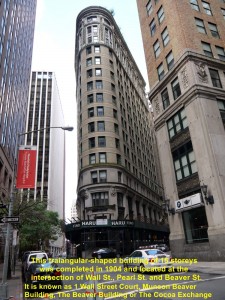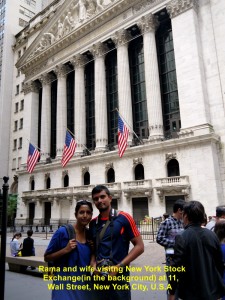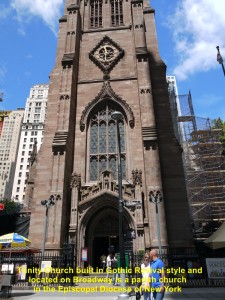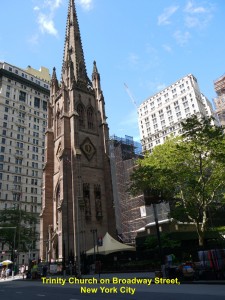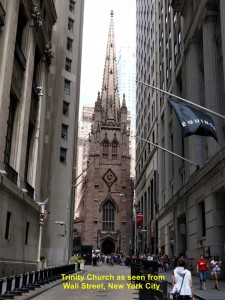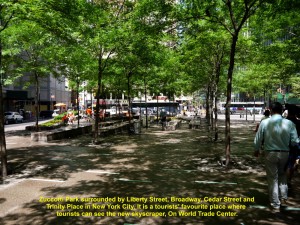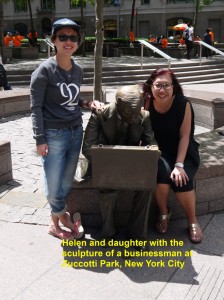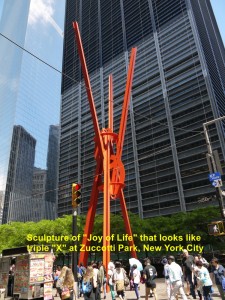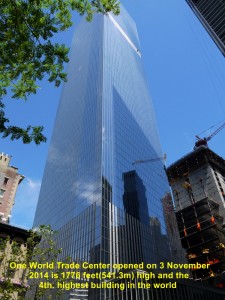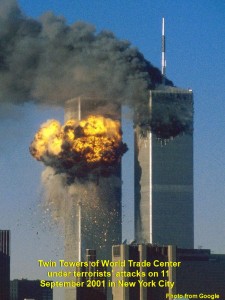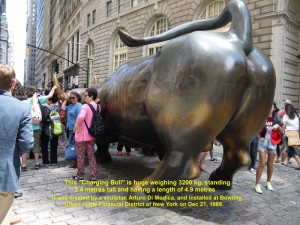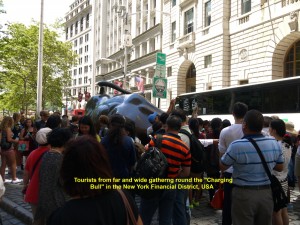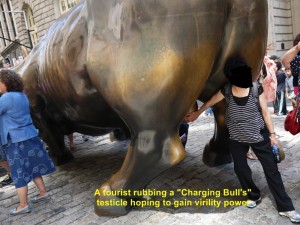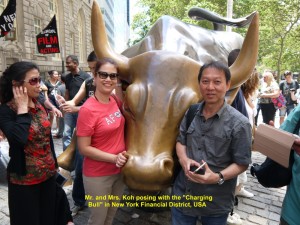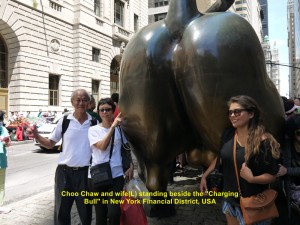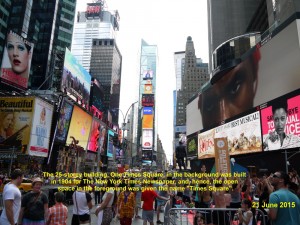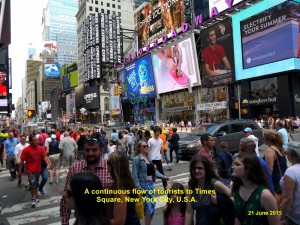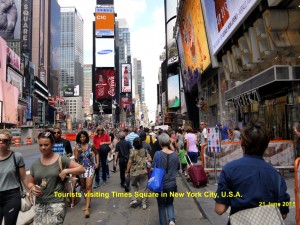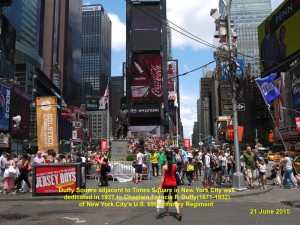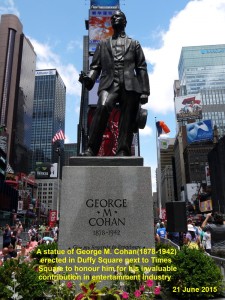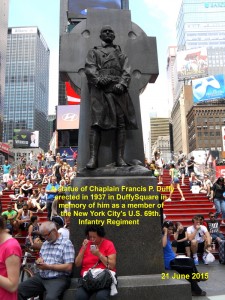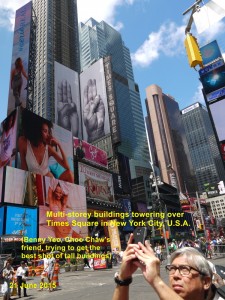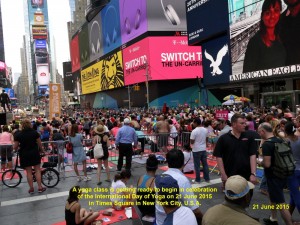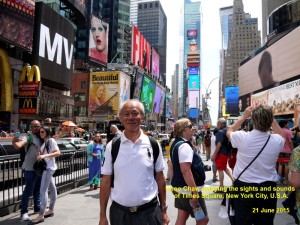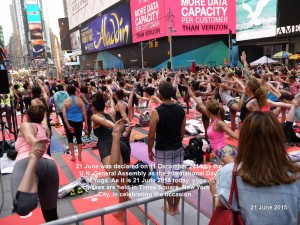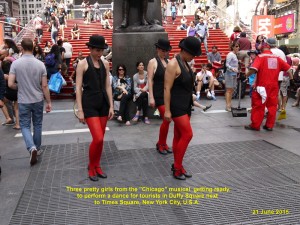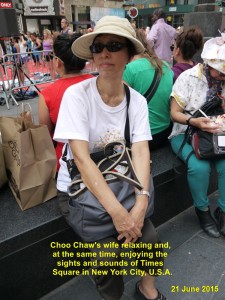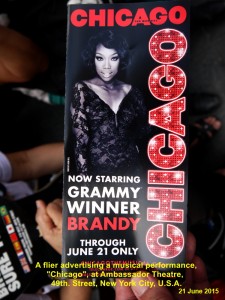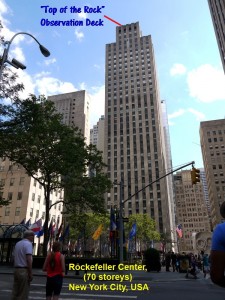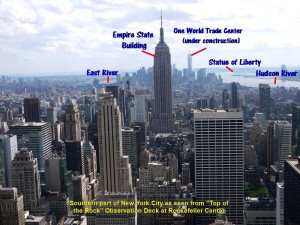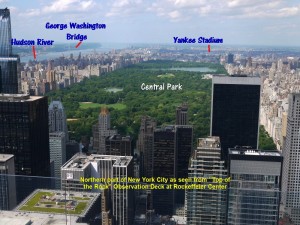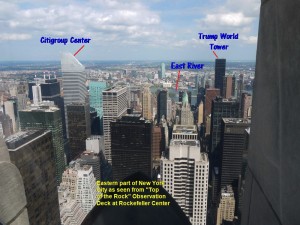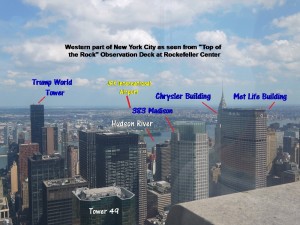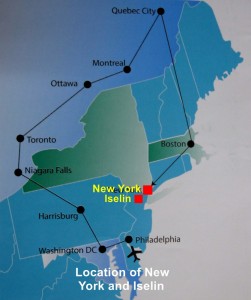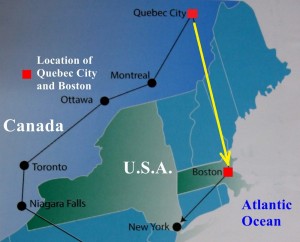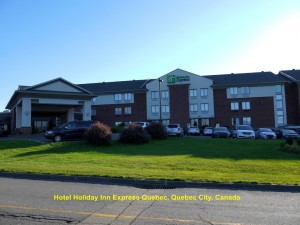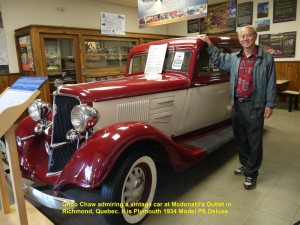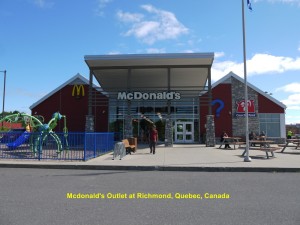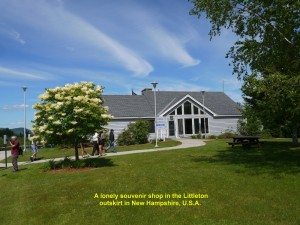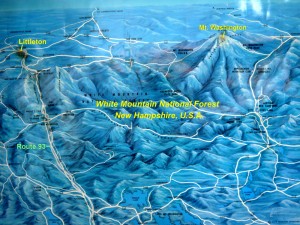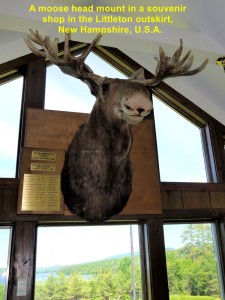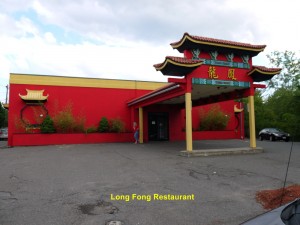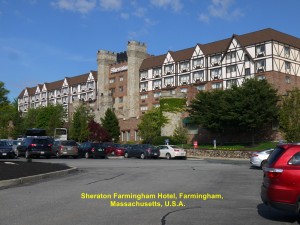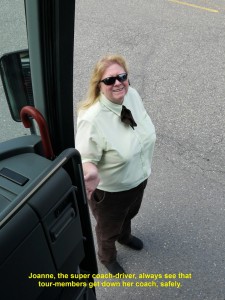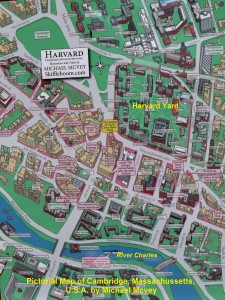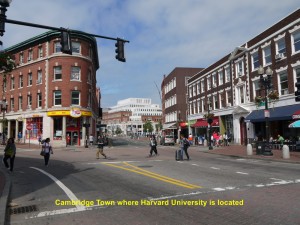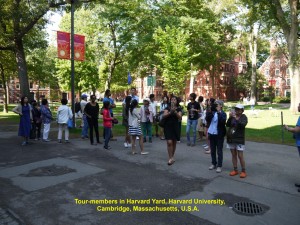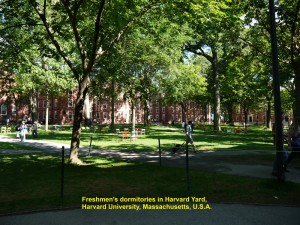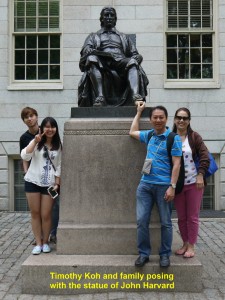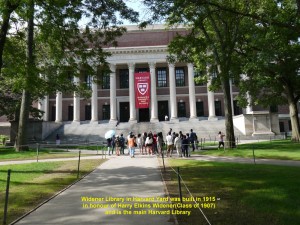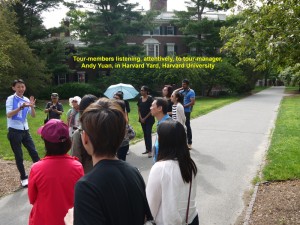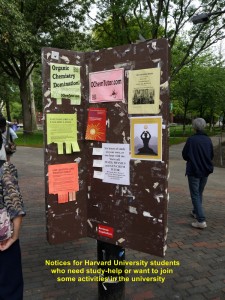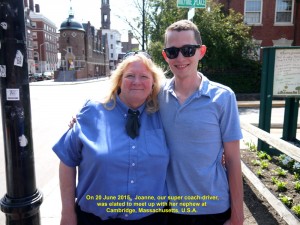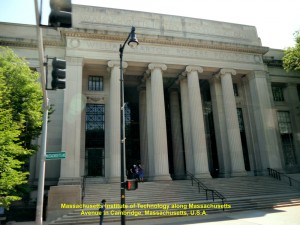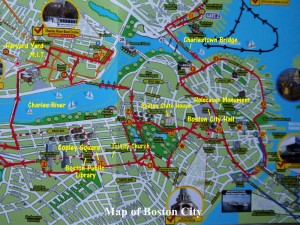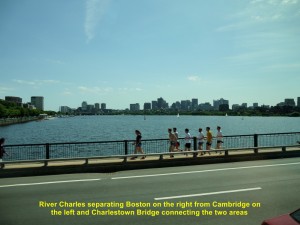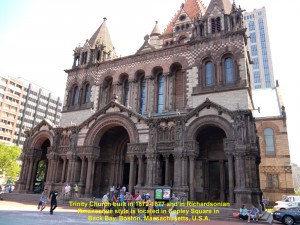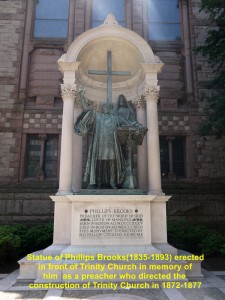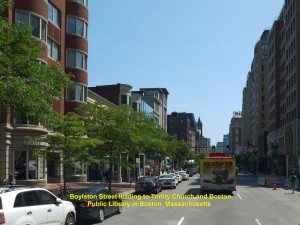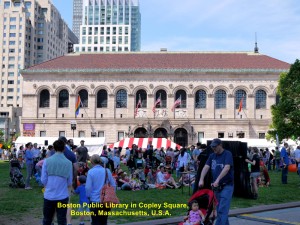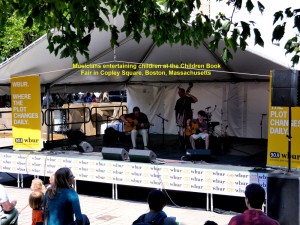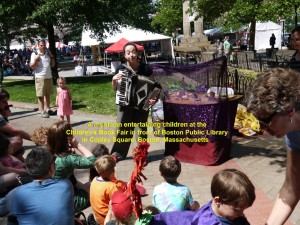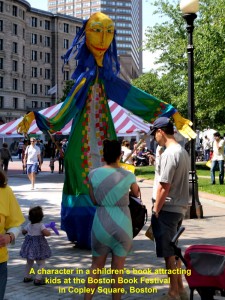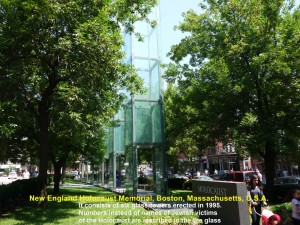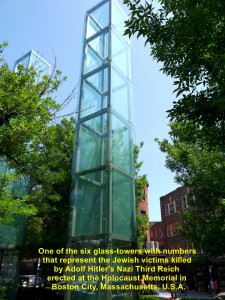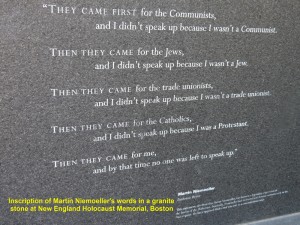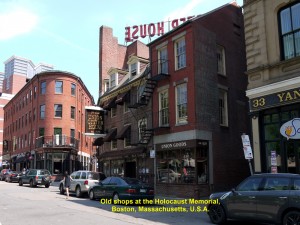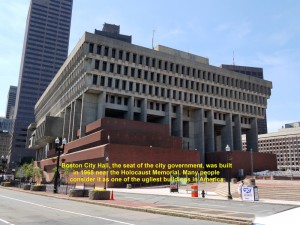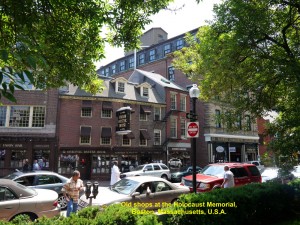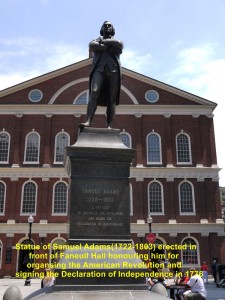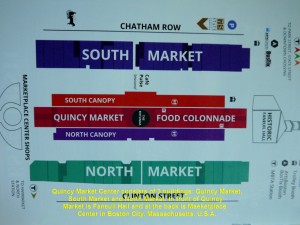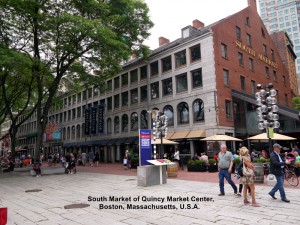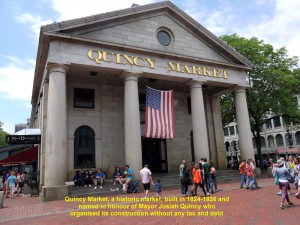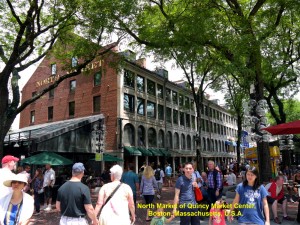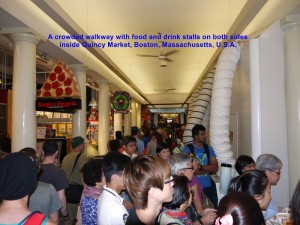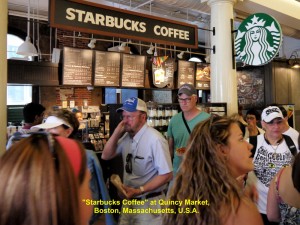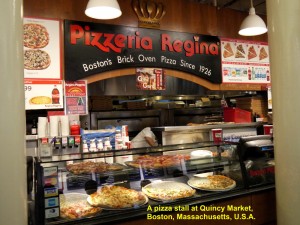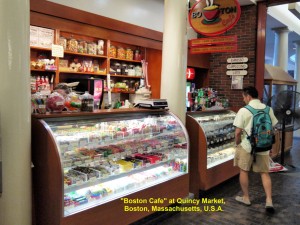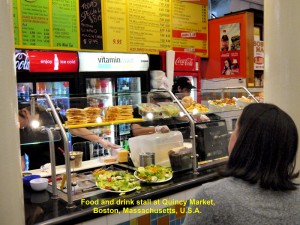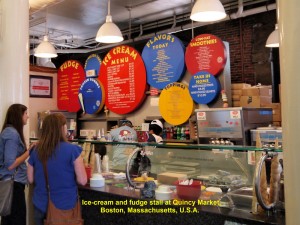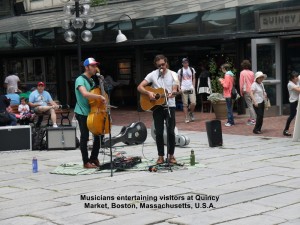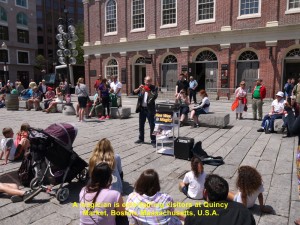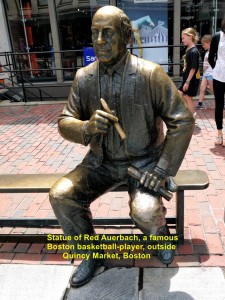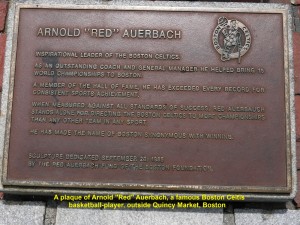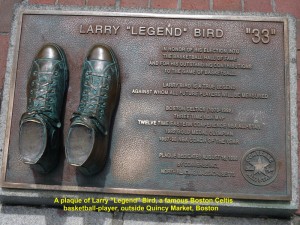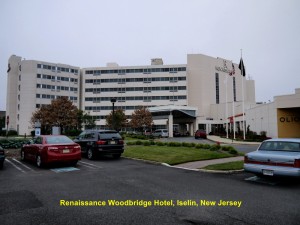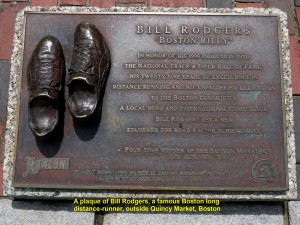Eastern Europe Tour Part I(Budapest)
Eastern Europe Tour Part I(Budapest)
Journey to Budapest, Hungary
Tuesday, 13 October 2015
KLIA – Istanbul Ataturk Airport – Budapest Airport
On 13 October 2015, a group of 26 Malaysians, including my wife and myself, reported to a tour manager, Joanne Wong, at the Kuala Lumpur International Airport(KLIA), Sepang, Malaysia. Then together we boarded a Turkish airline of model Airbus 330-300 at 11.25 p.m.(Malaysian time) and left the airport for Istanbul Ataturk Airport.
After flying a distance of about 8350 km in ten and a half hours, it landed at the Istanbul airport where we waited for a while for another Turkish airplane to take us to Budapest in Hungary. At 7.25 in the morning our new plane took off and travelled for the remaining distance of about 1000 km in 1 hour and 30 mins before it landed at Budapest Ferenc Liszi International Airport in Hungary.
Wednesday, 14 October 2015
Budapest City
On arrival at the Budapest airport, we waited for a short while for our coach. Soon it came and we all boarded it. It was driven by John, a Polish. John drove us to the Budapest City to meet a Hungarian tour-guide. While the coach was moving in the city we were charmed by the buildings which were built in many different architectural styles, including Neo-classical, Baroque, Renaissance and Gothic. In fact, they look like the buildings in Old Paris in France.
Budapest is the capital of Hungary and formed from the unification of three cities, viz. Buda, Pest and Old Buda. Its metropolitan area has a population 0f 3.3 millions and 52% of them is Roman Catholic. The city has many historical landmarks that make it one of the most popular tourists’ destinations in the world.
When the tour-guide appeared, she greeted us and introduced herself. She is a Hungarian and her name is Kinga Szabo. Then we all went together to the Heroes’ Square located at the end of Andrassay Avenue, our first place of visit.
On the way, we saw buses and trams which are popular means of public transport in the city. Besides, we saw a railway station built in eclectic architectural style in 1881-1884. Its facade is adorned with two statues of James Watt(inventor of steam engine) and George Stephenson(inventor of steam locomotive). It is called Budapest Keletic Station and a main terminal for international and inter-city railway networks.
Heroes’ Square
Heroes’ Square is a Hungary’s important monument created in memory of those Hungarians, including kings and leaders of tribes, who had fought for their country.
In the centre of the monument is a tall column with a statue of Archangel Gabriel atop and seven statues of Hungarian leaders of seven tribes who brought their people to Carpathian Basin in 896 at its base. Behind the column are two colonnades. There are seven statues of Hungarian kings on the left one and a statue of a Hungarian king, Matthias, and six statues of important figures who had fought in Hungarian wars on the right.
In front of the tall column is a tomb of an unknown soldier.
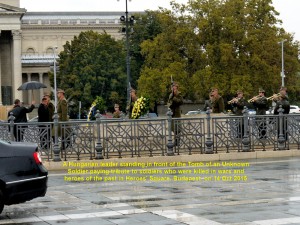
An important person paying tribute to soldiers killed in past wars and heroes of Hungary in Heroes’ Square, Budapest
Tribute Ceremony
It was drizzling when we arrived in the square. While we were looking at the statues of heroes from a distance, an important person came and walked up to the Tomb of Unknown Soldier in the middle of the square. He was accompanied by military officers. He stood in front of the Tomb and paid tribute to the soldiers killed in past wars and heroes of the country while three soldiers were playing a music. Then he was driven away. (I am wondering who that person was.)
Hall of Art
The Heroes’s Square is between two important buildings. Hall of Art on its right is a museum of contemporary art built in electic neoclassical architectural style in 1895.
Museum of Fine Arts
Museum of Fine Arts is on the left of the Heroes’ Square. Built in eclectic neoclassical architectural style in 1900-1906, it showcases six departments of art collections of more than 100 000 exhibits, viz. Egyptian, antique, old sculpture gallery, old painter gallery, modern arts and graphic arts. This museum is closed since February 2015 for renovation and expected to be reopened in March 2018.
Szechenyi Medicinal Bath
Behind the Heroes’ Square is a building complex which has three outdoor pools and 15 indoor pools filled with underground hot water containing minerals that are good, especially, for joint ailments. It is known as Szechenyi Medicinal Bath. Constructed in 1909 in neo-Baroque architectural style, it is the largest medicinal bath in Europe.
House of Terror
Having seen the Heroes’ Square, we left the place and moved on to Castle Hill in the eastern part of the city. While passing through the city, I saw a building with two words of “TERROR” on its eaves. Known as House of Terror and opened in 2002, it is a museum on Andrassy Avenue. It houses exhibits related to the fascist and communist dictatorial regimes in the 20th. Century in Hungary, including those who were detained, interrogated, tortured or killed in the building. It was a venue for Nazi headquarters in WWII.
River Danube
Then we crossed a long bridge spanning a well-known river in Europe. It is called River Danube and its source is in the Black Forest in Germany in the west. It flows eastwards for a distance of 2860 km through ten countries before entering the Black Sea. It is the second longest river in Europe, after the Volga River.
Shoes on the Danube Bank
As we were travelling along the Danube River to Castle Hill, we saw 60 pairs of shoes on the riverbank. Our tour-guide told us that the shoes were made of iron created by a sculptor, Gyula Paner, and fixed there, permanently, in 2005 in memory of the Jews who were killed by fascist Arrow Cross militiamen in Budapest in 1944-45 during WWII(1939-45). The victims were ordered to take off their shoes and stand on the edge of the bank. When they were shot, their bodies fell into the river and floated away.
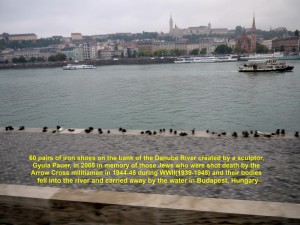
“Shoes on the Danube Bank” in memory of the Jews killed by fascist Arrow Cross militiamen in 1944-45
Castle Hill or Castle District
Several minutes later, we reached Castle Hill and our coach stopped at a spot where we walked up a few flights of steps to the top.
Castle Hill, also known as Castle District, is a kilometre-long limestone plateau that is 170 m above River Danube. It is a popular place among tourists as it has some historical buildings and museums.
On the hill we visited the following important places:
Fisherman’s Bastion
It looks like a broad wall or fortress built on the edge of the Castle Hill with seven towers each having a cone-shaped top. The seven towers represent the seven Hungarian leaders of seven tribes that settled in Carpathian Basin in A.D. 896. The Bastion takes its name from the guild of fishermen responsible for defending the city walls in the Middle Ages. It was built in 1895-1902 in neo-Gothic and neo-Romanesque architectural style. Visitors can go up the hill to the Bastion by using a path and steps.
Standing on the Fisherman’s Bastion, we saw a breathtaking, panoramic view of River Danube and almost the whole city of Budapest, including the Parliament Building and a few bridges spanning the river. One of the bridges is Szechenyi Chain Bridge which is the oldest in the city .Opened in 1849, it is 375 m long.
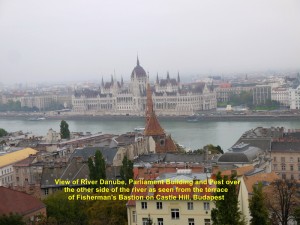
A panoramic view of River Danube, Parliament Building and the rest of Budapest City as seen from Fisherman Bastion, Castle Hill
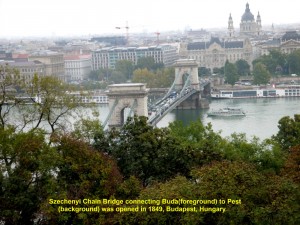
Szechenyi Chain Bridge, opened in 1849 and the oldest bridge in Budapest City, as seen from Castle Hill
In the olden days, Budapest consisted of three cities: the two upper parts east of River Danube that were known as Buda and Old Buda, and the lower part west of River Danube that was Pest. It was in 1873 when they were united to form one city called Budapest that became the capital of Hungary.
Trinity Square Column
Trinity Square is an open space between Fisherman’s Bastion and a Roman Catholic church, Matthias Church. Located in its centre is a tall column known as Holy Trinity Column as it has a sculpture of Trinity on its top.
It was built in 1710-1713 and erected there in memory of those who were killed in plague epidemics in 1691 and 1709 and to ward off the disease.
Statue of King Stephen I(975-1038)
Erected in 1906 in Trinity Square and near Fisherman’s Bastion is the statue of Saint Stephen I(975-1038). He was the first king of Hungary from 1000 till 1038.
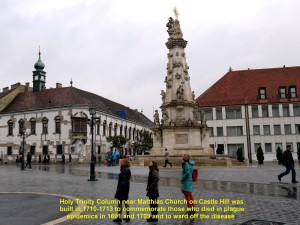
Holy Trinity Square Column built in 1710-1713 in memory of those who died in plague epidemics in 1691 and 1709 in Trinity Square, Castle Square, Budapest
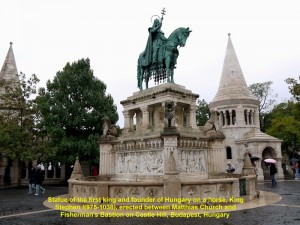
Statue of King Stephen I(975-1038), the first king of Hungary, in the Trinity Square, Castle Hill, Budapest
Matthias Church
In the square is Matthias Church, a Roman Catholic church, that was built in Gothic architectural style in the second half of the 14th. Century. It was, originally, known as “The Church of Our Lady”. In the 19th. Century it was renamed after King Matthias.
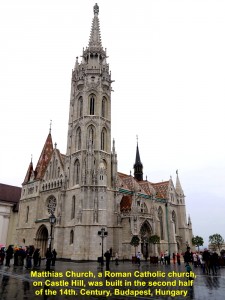
Matthias Church, a Roman Catholic Church, was built in the late 14th. Century, Castle Hill, Budapest
Matthias Church, a church of religious relics
Matthias Church houses some religious relics, medieval stone carvings, replicas of royal crowns, enamel pictures of Lord Jesus Christ and saints, statuettes of Christ, Virgin Mary and saints to name a few.
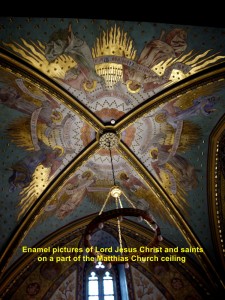
Enamel pictures of Lord Jesus Christ and saints on a part of the ceiling of Matthias Church, Castle Hill, Budapest
Besides, it had carried out some important royal ceremonies, including coronations of two kings, wedding of a king and funerals King Bela III(1748-1792) and his first wife. The king and his first wife were buried in one of its chapels.
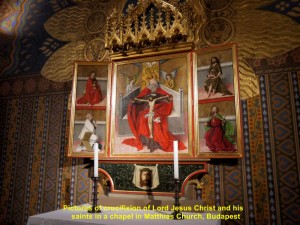
Pictures of the crucifixion of Lord Jesus Christ and saints in a chapel in Matthias Church, Castle Hill, Budapest
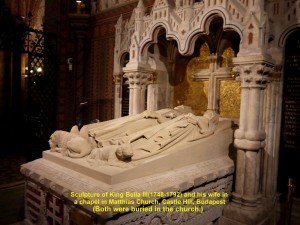
Sculpture of King Bella III(1748-1792) and his first wife in a chapel in Matthias Church and both were buried in the church
Buda Castle or Royal Palace
Built in the 14-20th. Centuries, Buda Castle or Royal Palace was a residence for Hungarian kings. The majestic-looking building is a mixture of some architectural styles, including Baroque, Baroque Revival and Modernist. It now houses Budapest History Museum, National Szechenyi Library and Hungarian National Gallery.
Sculptures around Buda Castle
There are several bronze sculptures around Buda Castle, such as the following:
Sculpture of Matthias Fountain
Standing on top of the rocks is King Matthias with a cross-bow and dead deer at his feet. Below him are his two men and three dogs. This sculpture was created in 1899.
On the right-hand side of the sculpture is a statue of Szep Ilonka who had fallen in love with the king but died of a broken heart when she knew of his true identity. On the left-hand side is Galeotto Marzio, an Italian chronicler who lived and worked in Matthias court.
Sculpture of Taming a Wild Horse
Sculpture of a man taming a wild horse on a high pedestal was created in 1901.
Statue of Prince Eugene of Savoy(1663-1736)
The statue of Prince Eugene of Savoy(1663-1736) on a high pedestal was created in 1900. Prince Eugene was a general of the Imperial Army, statesman and successful commander. He had served three Holy Roman emperors.
Sculpture of Three Children and a Large Fish Fountain
This sculpture done in 1912 depicts three children struggling with a large fish they have caught with a net.
Sculpture of Turul
The sculpture was created in 1905. Turul is a Hungarian mythological eagle. The Hungarians believe that it is a messenger of God that has power, strength and nobility.
Sculpture of Crow with a Gold Ring
At the entrance of Buda Castle there is a sculpture of a crow with a gold ring in its beak perching on a tall tree branch. Some Hungarians believe that the bird stole King Matthias’ gold ring and later the king caught and killed it.
Sandor Palace
This neo-classical building located near Buda Castle is the official residence of the President of the Republic of Hungary. The current president is 56 years old named, Janos Ader. He was elected as the president in 2012 in a parliamentary vote.
While I was there I saw two young sentries guarding the entrance of the President’s residence. I asked one of them for permission to take a photo with him. But he just stood there motionless like a statue. Since my Hungarian tour-guide, Kinga Szabo, said it was fine to take a photo with him, I stood near him and she snapped a photo of us using my camera. Then I thanked her and the sentry. I was not surprised that the latter did not respond.
Sculpture of Grof Bethlen Istvan(1874-1946)
Grof Bethlen Istvan, an aristocrat and statesman, became the Prime Minister of Hungary from 1921 till 1931. Its bronze statue can be seen near Sandor Palace.
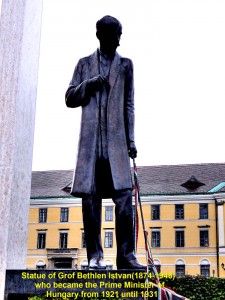
Statue of Grof Bethlen Istvan, the Prime Minister of Hungary from 1921 till 1931, near Sandor Palace, Castle Hill, Budapest
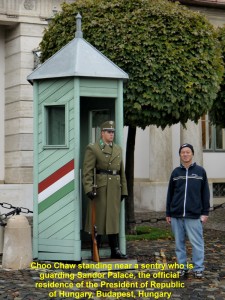
Choo Chaw taking photo with a sentry outside the entrance of President’s residence, Sandor Palace, Castle Hill, Budapest
River Danube Boat-Cruise
Later, we left Castle Hill and went downtown Budapest to have lunch at 1 p.m.. After lunch we went for a boat-cruise on River Danube.
As we were cruising along the river, we saw picturesque views of the cities. Although it was misty and drizzling, lightly, we could still see from our boat Buda Castle on Castle Hill, Church of St. Anne in Batthyany Square, Parliament Building and other quaint buildings along both sides of the river. Besides, we went under two bridges: Margaret Bridge and Szechenyi Chain Bridge, both connecting Buda in the east with Pest in the west.
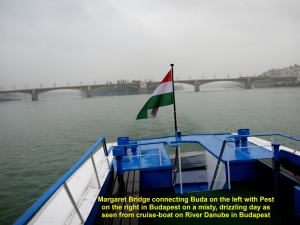
Margaret Bridge as seen on a misty, drizzling day connects Buda on the right with Pest on the left in Budapest
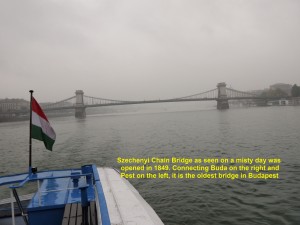
Szechenyi Chain Bridge as seen on a misty, drizzling day connects Buda on the right with Pest on the left and is the oldest bridge in Budapest
Hotel Budapest
After the River Danube boat-cruise, we went for dinner, checked in and stayed for a night at Hotel Budapest which is on the Buda side of Budapest City.
Eastern Europe Travel(13-20 October 2015)
Part II(Bratislava & Pandorf Designer Outlet)
U.S.A. and Canada East Coast Travel Part VII(Woodbury, JFK Airport and Home)
U.S.A. and Canada East Coast Travel Part VII(Woodbury, JFK International Airport and Home)
Day 11 Monday 22 June 2015
Woodbury Common Premium Outlets
Day 11 was the last day of our U.S.A. and Canada tour.
At 8.30 in the morning we left Renaissance Woodbridge Hotel in Iselin in New Jersey and travelled 80 km north to Woodbury Common Premium Outlets in Woodbury, Central Valley of New York.
Woodbury Common Premium Outlets
Opened in 1985, it has now 220 stores selling designer fashion clothing, footwear, luggage, accessories, jewellery and other goods. Most of the goods carry American brands like Levi’s, Coach, Tommy Hilfiger, Hush Puppies, Calvin Klein, Timberland, Polo Ralph Lauren, Guess, DKNY, Tory Burch and many more.
It was a sunny day when we entered the shopping place. As it was Monday there were not many shoppers around and it was a good day for us to shop.
As there are so many stores in the large area, they are built in a few zones. In each zone the roofs of the stores are painted with the same colour so that visitors can identify the zones, easily.
Food Pavilion
During lunch-time we had our meals at the Food Pavilion. After lunch, we continued looking for bargains at the remaining stores.
John F. Kennedy International Airport, New York
After spending almost the whole day at the Premium Outlets in Woodbury, we left at 5 p.m. and travelled on a busy highway to John F. Kennedy International Airport. The airport is about 120 km south of Woodbury.
Farewell to Roanne, our Super American Coach-Driver
Two and a half hours later, we arrived at the airport. Before we got into the airport, we hugged, thanked and said farewell to our super American coach-driver, Roanne, who had, diligently and carefully, driven us to so many places of interests in U.S.A. and Canada for about ten days. Frankly speaking, it was an emotional farewell moment for most of us.
Photos of New Friends
Inside the airport, we checked in and got our air tickets. All of us were happy to go home to see our loved ones soon after over ten days touring in U.S.A. and Canada. In the departure hall, I took out my camera and took photos of some of my tour-members who have become my friends.
Departure for Doha, Qatar
At 10.10 p.m. we boarded a Qatar airplane of model B777-300ER, left JFK International Airport and flew all the way to Hamad International Airport in Doha, Qatar, without stopping. It took almost 12 hours to travel a distance of 10 800 km from New York to Qatar. Of course, it was uncomfortable to stay in the economy class on the plane for so many hours.
When we arrived at the Doha airport in Qatar we stayed at the airport and waited for another Qatar plane to fly us to Singapore. Finally, three and a half hours later, we boarded a Qatar plane of model B787-8 and departed for the next and final destination, Singapore.
Changi International Airport, Singapore
At 9.15 a.m. on Tuesday, 24 June 2015(Singapore time and date), we, finally, arrived at Changi International Airport, Singapore, safely. It took almost 8 hours for the plane to fly a distance of about 6 500 km to reach Singapore.
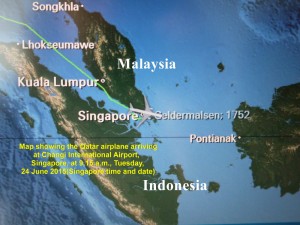
The Qatar airplane arriving at Changi Airport, Singapore, at 9.15 a.m. on Tuesday, 24 June 2015(Singapore time and date)
Well, that is my unforgettable tour in east coast of U.S.A. and Canada. My new friends will remember it for a long time, too.
THE END
U.S.A & Canada East Coast Travel
Part I Philadelphia & Washington D.C.
Part II Niagara Falls & Toronto City
Part III Colborne, 1000 Islands & Ottawa City
Part IV Montreal & Quebec City
Part VII Woodbury, JFK Airport & Home
[Read about my tour in west coast of U.S.A. at this website and subsequent ones: U.S.A. West Coast Travel Part I(San Francisco City) ]
Acknowledgement
Thanks to all who have made our tour possible, including the tour manager, Andy Yuan, American coach-driver, Roanne, EU Holidays Pte. Ltd.(Singapore), and Irama Travel & Tours Sdn. Bhd.(Johor Bahru).
U.S.A. and Canada East Coast Travel Part VI(New York)
Filed under: U.S.A. and Canada East Coast Travel Part VI(New York), Uncategorized
U.S.A. and Canada East Coast Travel Part VI(New York)
Day 10 Sunday, 21 June 2015
At 8.30 in the morning we left our hotel, Reanaissance Woodbridge Hotel at Iselin in New Jersey and went 31 km north-east to Pier 15 on New York Harbour in Lower Manhattan to see the Statue of Liberty on a tiny island called Liberty Island.
Hornblower Boat Cruise
When we arrived at Pier 15, the sky was cloudy and we were worried that it might rain. After queuing up for half an hour together with other tourists, we boarded a Hornblower boat. When it was going to the Liberty Island we were glad that the sky became bright and the Statue of Liberty could be seen in the distance, clearly.
Bridges and Skyscrapers of New York City
As the boat was moving, slowly, towards the statue, we saw bridges, Brooklyn Bridge and Manhattan Bridge, connecting New York City and Brooklyn on Long Island, and skyscrapers of New York City moving away from us.
Then, half an hour later, the boat stopped for awhile near the Statue of Liberty, and we and others on the boat were excited and began to snap photos of the huge apple-green statue.
Statue of Liberty on Liberty Island
Created in the image of a Roman goddess, Libertas, in 1886, the Statue of Liberty on Liberty Island was a gift to the U.S.A. from France as a gesture of friendship. Standing at a height of 34 metres on a 27 metre-pedestal, the goddess holds a torch high in her right hand and a tablet in her left hand with the inscribed date of the American Declaration of Independence: “July 4, 1776”. Besides, there is a broken chain lying at her feet symbolising freedom from bondage.
In 1984, the icon of freedom was designated as a UNESCO heritage site. In the UNESCO’s “Statement of Significance”, it declares that the statue is a symbol of “liberty, peace, human rights, abolition of slavery, democracy and opportunity”.
Ellis Island
Near the statue is another island known as Ellis Island. It was the first stop and gateway for 12 million migrants who were mostly Europeans to places all over the United States from 1892 until 1954. Since 1990 the main building on the island is made a museum of immigration.
Soon we went back to Pier 15. After disembarking the board at the pier, we walked to South Street, crossed the road, and walked to Wall Street.
Wall Street, New York City
Wall street stretches from South Street to Broadway, a length of 1.1 km. It is narrow with multi-storey buildings on both its sides. Located in the New York Financial District, Wall Street has become a metonym for financial and corporate sector. It attracts lots of tourists from all over the world.
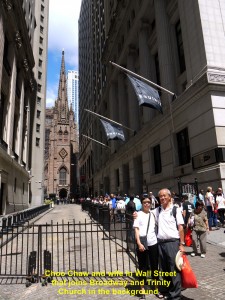
Choo Chaw and wife on Wall Street that joins Broadway in the background in New York Financial District
1 Wall Street Court
As I was walking along the street an unusual building of 15 storeys high and in a triangular shape caught my eyes. Located at the intersection of Wall Street, Pearl Street and Beaver Street, it was completed in 1904 and first occupied by Munson Steamship Co. and later by many other companies. Known as 1 Wall Street Court, it now becomes a residential building since 2006.
New York Stock Exchange
Soon we came to the world’s largest stock exchange by market capitalisation that is located at 11, Wall Street. Known as New York Stock Exchange(NYSE) and built in 1903, it provides a means for buyers and sellers to trade shares of stock in companies registered for public trading. It has an index, NYSE Composite Index, to measure the overall market performance over time. It has other indices too, like Dow Jones Industrial Average(DJIA), Nasdaq Composite and S & P 500.
American Stock Exchange Building
There is another building nearby. It is at 86, Trinity Place which was built in 1921. It was used as a stock market for equities trading by the New York Curb Exchange which was renamed the American Stock Exchange in 1953. The building then known as American Stock Exchange was closed on 1 December 2008 and all its equities trading activities were moved to New York Stock Exchange at 11, Wall Street.
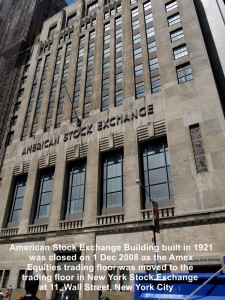
American Stock Exchange closed in 2008 after over 89 years of equities trading in New York Financial District, New York, U.S.A.
Federal Hall National Memorial
There is an old building known as Federal Hall National Memorial across Wall Street from the NYSE Building. It was built in 1842 to replace the old one which was built in 1700 as New York’s City Hall that was later demolished in 1812.
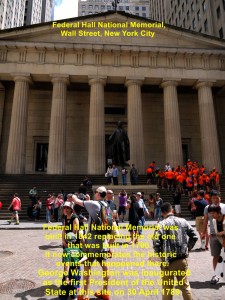
Federal Hall National Memorial built in 1842 to replace the one as New York’s City Hall, New York City
When the new Federal Hall was built in 1842 it first served as the U.S. Custom House, later Sub-Treasury Building and now a national memorial that commemorates the historic events that had happened there. Among the events are: the former hall at the same site was made the first Capitol Building of the U.S., and used as the place where George Washington was inaugurated as the first President of the U.S. on 30 April 1789 and the U.S. Bill of Rights was introduced in the First Congress.
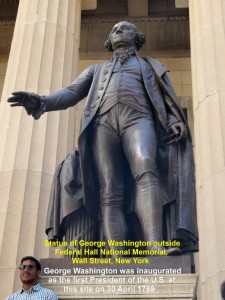
Statue of George Washington outside Federal Hall National Memorial in New York Financial District, New York
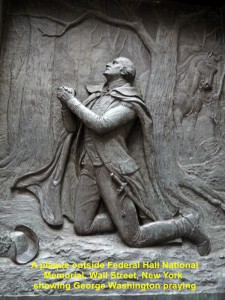
A plaque of George Washington on his knees and praying outside Federal Hall National Memorial, New York City
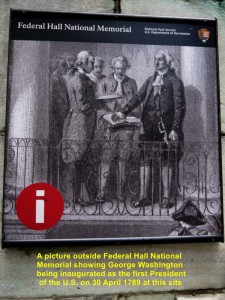
A picture showing George Washington being inaugurated as the first President of U.S.A. on 30 April 1789 outside Federal Hall National Memorial, New York City
Trinity Church
Trinity Church can be seen from Wall Street. It is at the end of Wall Street and on Broadway. Built in Gothic Revival architectural style in 1839-1846, it is a parish church in the Episcopal Diocese of New York. This is the third church being built at the same spot to replace two old ones.
The first one was built in 1698 and destroyed in the Great New York City Fire of 1776. Then the second one was built in 1788-1790 and torn down later due to severe snow that weakened it during the winter of 1838-1839.
Zuccotti Park
After touring Wall Street, we walked to Zuccotti Park where trees were grown. At this park two sculptures can be seen. One known as “Joy of Life” is a 70-foot-tall sculpture consisting of bright red beams that look like three “X”s joining together in the middle. and the other sculpture known as “Double Check” is a bronze businessman with an open bag on his lap sitting on a bench. Out of curiosity, I looked at the things he had in the bag. There were pencils, papers, pen, stapler, stamp-pad and a communication-machine in it.
This park is a tourists’ favourite place as they can see One World Trade Center towering high across the intersection of Liberty Street and Trinity Place.
One World Trade Center
One World Trade Center, the main building of the World Trade Center Complex, is 1776 feet(541,3 m) high consisting of 104 storeys. The figure “1776” is intended to symbolize the year 1776 when the U.S. Declaration of Independence was signed.
This modern building at 285, Fulton Street, Manhattan, New York, is the 4th. tallest in the world. It was built in 2013 and opened on 3 November 2014. It is built to replace the Twin Towers which were destroyed by the al-Qaeda terrorists in 2001.
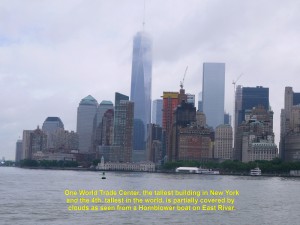
One World Trade Center, the tallest building in New York City as seen from a Hornblower boat on East River
Twin Towers
The Twin Towers of the World Trade Center at the same site as One World Trade Center were destroyed by terrorists’ attacks on 11 September 2001 and about 3 000 people were killed. They were built in 1970s each over 1350 feet(410 m) high,
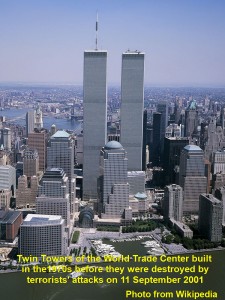
Twin Towers of the World Trade Center built in 1970s and destroyed by terrorists’ attacks on 11 September 2001
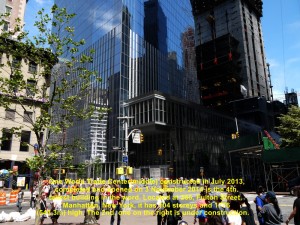
One World Trade Center has 104 storeys and is 1776 feet(541.3 m) high. The other building is under costruction.
Terrorists’ Attacks on World Trade Center on 9/11
In the morning of 11 September 2001 five al-Qaeda terrorists hijacked an American Airlines Flight 11 and crashed it into the North Tower. Several minutes later, another group of al-Qaeda terrorists hijacked a United Airlines Flight 175 and crashed it into the South Tower. The South Tower was burning for an hour before it collapsed, while the North Tower was burning for two hours before it too collapsed.
Since those terrorists’ attacks or 9/11 attack, airport security is tightened worldwide. Passengers have to take off their shoes and belts, and go through full-body scanners at airport check-points. Besides, liquids more than 100 ml, knives, box-cutters, cigarette lighters and other objects that may be used for threatening life are not allowed to be carried by passengers into airplanes. These strict checks cause long queues at airports.
Charging Bull
Later, we left Zuccotti Park and walked to Bowling Green. At this place there is one large sculpture of a bull. It looks muscular and fierce. It is leaning back on its haunches, lowering its head, curving its tail like a lash and getting ready to charge.
But it looks so adorable that tourists like to gather round it and hope to get a chance to take a photo with it. Besides, they like to touch its head, nose and horns believing that it will bring them good fortune, and its testicles believing that it will give them fertility or virility power.
The sculpture is known as “Charging Bull”, “Wall Street Bull” or “Bowling Green Bull”. Created by a sculptor, Arturo Di Modica and installed at the present site on Dec 21, 1989, it is made of bronze weighing 3 200 kg, standing 3.4 metres tall and having a length of 4.9 metres. It symbolizes aggresive financial optimism and prosperity. It is now New York City’s icon.
Having seen the Charging Bull, we walked to our tour-coach on Battery Place where Roanne, our patient and friendly driver, was waiting for us. When all of were on the bus, Roanne drove us to another tourists’ place of interest called “Times Square”.
Times Square
Times Square is in Manhattan, New York City, and it is one of the most popular tourists’ destinations in the world. Over 300, 000 tourists visit the place, daily.
In 1904, a 25-storey building was built for a local newspaper company, The New York Times. Hence, the open space in front of it was and still is called “Times Square”. This building is now known as “One Times Square”. It has a large ball atop and will illuminate a kaleidoscope of LED coloured lights when it is lowered on every New Year’s eve ushering in a new year. Hundreds of thousands of revellers will be there to watch it. It is a site for other important events, too.
Adjacent to Times Square is a small area known as Duffy Square that was dedicated in 1937 to Chaplain Francis P. Duffy(1871-1932) who was a member of the New York City’s U.S. 69th. Infantry Regiment. A statue of him is erected in the square in memory of him. In the same square, there is another statue. It is of George M. Cohan(1878-1942) erected in 1959 to commemorate his invaluable contribution to the entertainment industry.
Times Square is a place surrounded by over 40 Broadway theatres that offer live, large-scale performances, like musicals, plays and magic shows. Buildings at this bustling place are adorned with large billboards advertising foods, goods and Broadway shows or musicals like “The Lion King”, “Aladdin”, “Chicago”, “Mama Mia!” and “The Phantom of the Opera”. Over 13 million people watched performances in these theatres last year(2014).
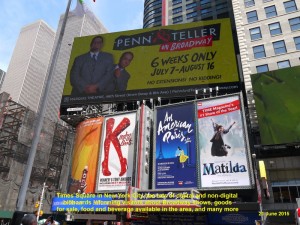
Multi-storey buildings in Times Square adorned with large bill-boards advertising Broadway musicals and shows
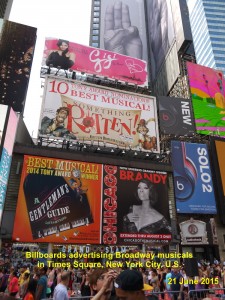
Multi-storey buildings in Times Square adorned with large bill-boards advertising Broadway musicals and shows
International Day of Yoga
We were in Times Square on 21 June 2015 and, coincidentally, it was International Day of Yoga. It was declared on 11 December 2014 by the United Nations General Assembly. So, in Times Square, there were hundreds of people doing yoga at the same time to celebrate the occasion.
Later, three young, pretty ladies from the “Chicago” musical group appeared in Duffy Square and performed a short dance for the visitors. From a flier I received, the dancers together with others would be performing at Ambassador Theatre nearby.
After spending several hours at the vibrant, crowded Times Square, we walked to Rockefeller Center which was a few hundred metres away.
30 Rockefeller Center
Rockefeller Center consists of several buildings between 48th. and 51st. streets in New York City. But we visited one of them which is known as 30 Rockefeller Center.
Built in 1931-1939, 30 Rockefeller Center has 70 floors and 850 feet(260 m) high. It has an observation deck on its top that offers 360-degree panoramic view of New York City. The deck is popularly known as “”Top of the Rock”.
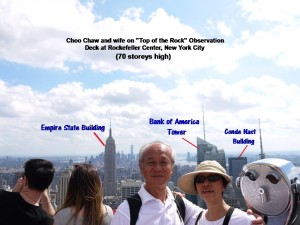
Choo Chaw and wife on “Top of the Rock”, an observation deck atop 30 Rockefeller Center, New York City
It was a sunny day when my wife and I went up to the “Top of the Rock”. Standing on the observation deck, we were mesmerized by the spectacular view of the whole city of New York, a city of hundreds of skyscrapers, seemingly, competing for heights.
At 4 in the afternoon we ended our New York City tour and went back to our hotel, Renaissance Woodbridge Hotel, at Iselin in Woodbridge Township. It is 31 km south-west 0f New York City.
U.S.A & Canada East Coast Travel
Part I Philadelphia & Washington D.C.
Part II Niagara Falls & Toronto City
Part III Colborne, 1000 Islands & Ottawa City
Part IV Montreal & Quebec City
Part VII Woodbury, JFK Airport & Home
U.S.A. and Canada East Coast Travel Part V(Boston)
Filed under: U.S.A and Canada East Coast Travel Part V(Boston)
U.S.A. and Canada East Coast Travel Part V(Boston)
Day 7 Friday, 19 June 2015
Journey from Quebec City(Canada) to Boston(U.S.A.)
At 8 in the morning of Day 7, we left Holiday Inn Express Hotel in Quebec City in Canada for Boston in the U.S..
Plymouth Sedan Portes 1934
After travelling for two hours on Route 55, we arrived at a McDonald’s Outlet at Richmond and stopped there for a toilet visit and snack. At this place we were fascinated by an old but shiny red car, “Plymouth Sedan Portes 1934”, which had been given a new coat of paint.
Derby Line
At 11 a.m. we moved on. An hour later, we arrived at Derby Line on the Canada-U.S.A. border where we had to go through a USA Inspection Station in Vermont State. After the immigration check, we went to a Chinese restaurant, China Moon Buffet Restaurant, in Derby Town to have lunch.
Littletown
At 1.40 p.m. we travelled on Route 93 that would bring us all the way to Boston in the south. An hour later, we stopped at a little shop near Littleton in New Hampshire for a toilet visit. In this shop I saw a moose head mounted on a wall. Moose are mostly found in the northernmost regions of America and throughout Alaska and Canada. They are large deer and their predators are humans, bears and wolves.
White Mountain National Forest
Then we were off again. Soon we were travelling in a scenic mountainous area. It is known as White Mountain National Forest where the highest mountain, Mount Washington, is about 1 300 metres high. It is a place where it offers a variety of recreational activities like camping, fishing, kayaking, swimming and mountain-climbing to name a few.
Dinner
At 5.30 p.m. we stopped at a Chinese restaurant, Long Fong Restaurant, for dinner. The dinner included a complete, cooked lobster for each tour-member. The lobster gave some of us a bad experience. As we were trying to get the meat out of the crustaceans using a chop-stick, some of us were injured by the sharp spines.
Sheraton Farmingham Hotel, Massachusetts
After dinner we were on Route 93 again. Finally, at 7.30 p.m. we arrived at a town in Massachussetts State, Farmingham, that is about 30 km east of Boston and checked in at Sheraton Farmingham Hotel where we stayed for a night.
Roanne, the super lady-driver
That was a long, tiring journey from Quebec City in Canada to Farmingham in Massachussetts State, a distance of about 600 km. Thanks again to our super lady-driver, Roanne, who took many hours to drive us to Farmingham.
Day 8 Saturday, 20 June 2015
Harvard University, Cambridge, Massachusetts
At 8.30 in the morning we left Farmingham and headed for Cambridge which is 3 km north-west of Boston City. On arrival at the town we visited the America’s oldest and prestigious university, Harvard University. Established originally by Massachusetts Legislature in 1636 and known as “New College”, it produces brilliant students who later become successful people in many fields.
Notable Harvard University Alumni
According to Wikipedia, its alumni include eight U.S. presidents, e.g. Barack Obama, John F. Kennedy and George W. Bush, 62 living billionaires, e.g. Bill Gates and Mark Zuckerberg(Facebook creator), Secretary-General of U.N., Ban Ki-moon, foreign political leaders like Taiwan President, Ma Ying-jeou, Canada Prime Ministers, Mckenzie King and Pierre Trudeau, and many more notable alumni.
Besides, the Academic Ranking of World Universities(ARWU) has consistently ranked it the best in the world since 2003. Hence, it is a “dream college” for both students and parents in the world.
Harvard Yard
On arrival at Cambridge, we entered Harvard Yard and saw a statue of a man, John Harvard(1607-1638), erected in front of a white building, University Hall. When Harvard died in 1638, he donated his 400 books and half of his estate to the university. For his generosity, the university was named after him, Harvard University, in 1638. Now the university has about 20 000 students in over 12 different academic schools located throughout the Boston Metropolitan area.
All the visitors including us in Harvard Yard took the opportunity to take a photo with the statue of John Harvard.
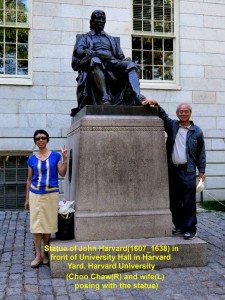
Choo Chaw and wife with the statue of John Harvard in Harvard Yard, Harvard University, Massachusetts
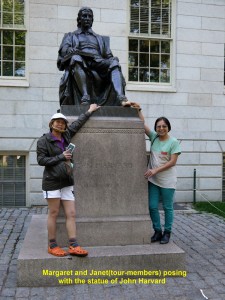
Margaret and Janet with the statue of John Harvard in Harvard Yard, Harvard University, Massachusetts
There are several buildings in Harvard Yard such as Freshmen dormitories for first year students, University Hall(a multi-purpose building), Widener Library(the main library of the university that has more than 5 million books) and Memorial Church(an interdenominational worship place).
Roanne’s Nephew
After a brief tour of Harvard Yard, we walked back to our coach nearby. Before we left, Roanne’s nephew appeared and met up with his elated aunt.
Massachusetts Institute of Technology, Cambridge
While travelling along Massachusetts Avenue to Boston City, we passed another well-known university, Massachusetts Institute of Technology(M.I.T.). Founded in 1861, it was originally a private research university in applied science and engineering. Now it includes a few more schools like biology, economics, linguistics and management. Like Harvard University, many notable M.I.T. alumni excel in many fields and receive prestigious honours and awards.
Then we crossed Charlestown Bridge over River Charles and arrived at Boston City. The first historic landmark we visited in the city was Trinity Church.
Trinity Church in Copley Square
Founded in 1733 and rebuilt in the Romanesque Revival style in 1872-1877 replacing the old one that was burnt down. Trinity Church is an episcopal church in Copley Square in Back Bay and has a congregation of about 3000 households. Its architectural style characterized by a clay roof, polychromy, rough stone, heavy arches, and a massive tower has been adopted for a number of public buildings across the United States. Statuettes of Lord Jesus, saints and worshippers can be seen on its facade.
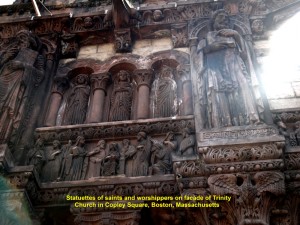
Statuettes of Lord Jesus, saints and worshippers on the facade of Trinity Church, Boston, Massachusetts
Phillips Brooks(1835-1893)
A statue of Phillips Brooks(1835-1893) was erected in front of Trinity Church in memory of him as a preacher who directed the construction of the church in 1872-1877.
Boston Marathon Bombings
The Copley Square is a place where the popular 42 km-Boston Marathon finishes. This marathon is held on the third Monday of April annually since 1969 and attracted over 30 ooo participants this year.
During the Boston Marathon on 15 April 2013, two Chechen brothers let off two pressure cooker bombs in Boylston Street killing three spectators and one of the perpetrators, and injuring 280 people. Later, the second perpetrator was caught and sentenced to death. They planted the bombs because they were against the U.S. foreign policy against Muslim countries.
Boston Public Library
Facing Trinity Church is Boston Public Library that was built in Italian Renaiassance style in 1895. When we were there Boston Book Festival 2015 was held in Copley Square.
Boston Book Festival 2015 in Copley Square
This festival attracted kids, teens and adults. Many activities and events were held for children of all ages, such as story-telling, workshops, dancing, concert and fun-filled activities.
Later we went to another place nearby which is surrounded by old buildings. It is a place where a memorial was built. It is a sad one that is known as New England Holocaust(Shoah) Memorial.
Holocaust(Shoah) Memorial
This memorial was created in memory of the six million Jewish men, women and children who were, mercilessly, killed by the Nazi Third Reich headed by Adolf Hitler between 1933 and 1945 in Europe. It is also dedicated to another five million people of other races, religions and nationalities. Hundreds of generous citizens had made the construction of the memorial possible.
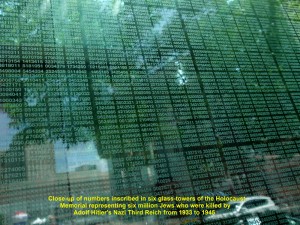
Close-up of numbers on a glass-tower each denoting a Jew who was killed by Adolf Hitler’s Nazi Third Reich in the period 1933-1945
Tall Green Glass-Towers
At the grim memorial, there is a row of six tall green glass-towers inscribed with countless numbers instead of names of the victims killed by the Nazi soldiers. Besides, there are words of survivors inscribed on some granite stones. There was one containing words which sent chill down my spine as I was reading them. They were said by a Lutheran Pastor, Martin Niemoeller(1892-1984), who was sent to two concentration camps(1937-1945) by Adolf Hitler, and they go like this:
“They came first for the communists, and I didn’t speak up because I wasn’t a communist. Then they came for the Jews, and I didn’t speak up because I wasn’t a Jew. Then they came for the trade unionists, and I didn’t speak up because I wasn’t a trade unionist. Then they came for the Catholics, and I didn’t speak up because I was a Protestant. Then they came for me, and by that time no one was left to speak up,”
Boston City Hall
Around the memorial are old buildings that have become cafes, restaurants and shops. A large, modern building can be seen across a road, Congress Street, from the Holocaust Memorial. It is Boston City Hall and local people think it is one of the ugliest buildings in America.
Faneuil Hall, Boston
The next place we visited was Faneuil Hall which is a historic landmark too.
Located near the waterfront, Faneuil Hall has been a marketplace and a meeting hall since 1743. It was in this building that speeches encouraging independence from Great Britain were made by Samuel Adams, James Otis and others.
Also known as “The Cradle of Liberty”, Faneuil Hall was built in Georgian architectural style in 1742 by Peter Faneuil for the Boston people.
Statue of Samuel Adams(1722-1803)
Erected in front of this building is a statue of Samuel Adams(1722-1803) in honour of him for organising the American Revolution against the British rule and signing the Declaration of American Independence in 1776.
Faneuil Hall Marketplace, Boston
Later, more buildings were built in front to accommodate increasing number of merchants and city residents. Today, Faneuil Hall Marketplace includes North and South Market Buildings which house retail shops, restaurants and business offices, and Quincy Market in between them houses more than forty different food-stalls.
Lunchtime at Quincy Market
As it was lunchtime, we entered Quincy Market and walked along the crowded walkway to a famous food-stall, Boston Chowda Co., to get our food. With the help of our tour-manager, Andy Yuan, I got my meal that included a lobster roll, soup and a cup of Coke.
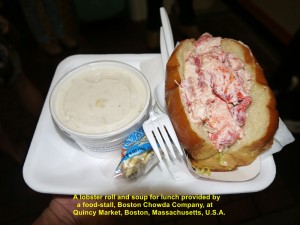
Tour members taking lobster roll and soup or another kind from Boston Chowda Co. for lunch at Quincy Market, Bostaon, Massachusetts, U.S.A.
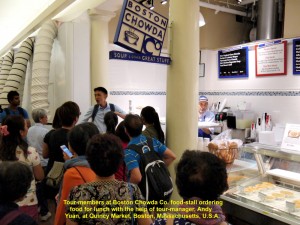
Tour-members at Boston Chowda Co. food stall for lunch at Quincy Market, Boston, Massachusetts, U.S.A.
Food and Beverage Stalls in Quincy Market
Visitors looking for food and drinks at this market are spoilt for choice. They can have different kinds of Western, European or Asian cuisines.
Cuisines of many countries are available at the market: Mexican, German, Japanese, Indian and Greek, to name a few.
Quincy Market Street Performers
There are stalls under canopies outside Quincy Market. They sell souvenirs, gifts, handbags, toys, accessories, etc. Besides, there are some street performers entertaining visitors outside the market. Among them are musicians, magicians and character impersonators.
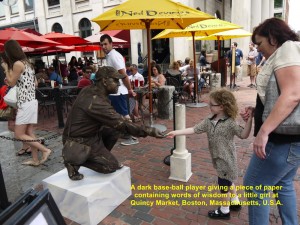
A baseball player impersonator giving a word of wisdom to a little girl outside Quincy Market, Boston
Statue of Red Auerbach(1917-2006)
While walking around Quincy Market, I came across a bronze statue of a fat man holding a large cigar and sitting on a bench. He was Red Auerbach(1917-2006) who was a famous Boston Celtis basketball-player, then a coach, president and finally vice-chairman of Boston Celtics.
As a coach, he won 938 games and 9 NBA Championships in 10 years, and as general manager and team president of Boston Celtics, he won an additional 7 NBA Championships, making him one of the most successful team officials in North American professional sports.
Larry “Legend” Bird Plaque
A plaque on the ground near the statue said about another outstanding basketball-player. He was Larry “Legend” Bird who was born in 1956. He was honoured for being elected into the Basketball Hall of Fame and his outstanding contributions to the basketball game. He played for Boston Celtics from 1979 until 1992. He was awarded three times NBA MVP, 12 times Eastern Conference NBA All-Star, NBA Coach of the Year in 1997 and 1998, and a 1992 gold medal Olympian. He was an extraordinary basketball celebrity.
Bill Rogers(“Boston Billy”)
Then I saw another plaque on the ground. It honoured a Boston distance runner, Bill Rogers(also known as “Boston Billy”), for being inducted “into the National Track & Field Hall of Fame, his 25 years of excellence in distance running and his unfaltering dedication to the Boston Community. A local hero and international competitor, Bill Rogers set a new standard for road-racing achievement, four time winner of the Boston Marathon(1975, 1978. 1979 and 1980)”.
Departure for New Jersey
At 1.30 p..m. we left Boston City and headed southwards on Route 95. After six hours of travelling, we arrived at a small place, Iselin, in Woodbridge Township in New Jersey. We checked in at a hotel known as Renaissance Woodbridge Hotel and retired for a night.
U.S.A & Canada East Coast Travel
Part I Philadelphia & Washington D.C.
Part II Niagara Falls & Toronto City
Part III Colborne, 1000 Islands & Ottawa City

